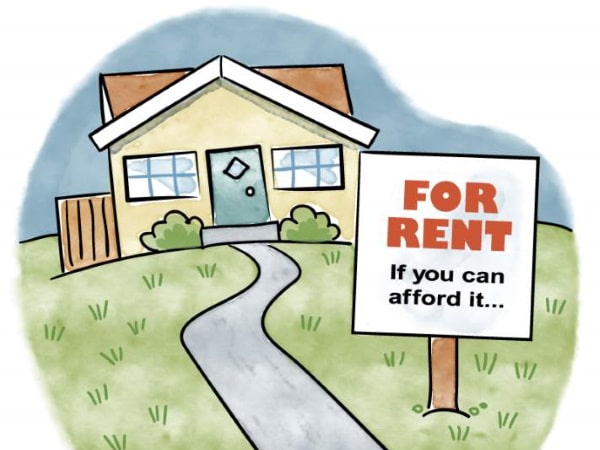Tough road ahead for switch to electric cars
(CNS): The government’s aim, set out in the revised National Energy Policy, to transition all new vehicles in the Cayman Islands to electric by 2045 will not be easy, as there are a number of hurdles in the way. Officials told CNS they believe the goal is attainable because of the significant changes in the US car market. But despite this optimism it will be a bumpy ride due to increased prices, logistical problems and this jurisdiction’s late start.
According to official statistics released to CNS this week, only around 3% of new vehicles being imported into the Cayman Islands are electric. The most recent figures show that since the beginning of the year, just over 100 of the more than 3,300 vehicles imported into Cayman were electric.
The government is hoping that, as a first step on the road to transport transformation, 30% of all categories of new vehicles will be EVs within seven years. This means Cayman will need to make a significant effort to encourage dealers and individual buyers to choose electric vehicles.
The Ministry of Sustainability has stated that the national targets for EVs proposed in the draft updated NEP are based on the fact that many of the US states and European countries have made commitments to achieve a full transition to zero-emission vehicle sales in all vehicle categories by 2040.
Based on conversations held with key stakeholders in the local car sales sector as part of the five-year review process, Cayman is expecting to get there by 2050, officials said in an email to CNS this week. This will allow the development of a regulatory framework for charging stations, which is a priority over the next year.
It will also provide time to raise awareness about job opportunities and the consumer benefits of EVs. As part of these efforts, the updated implementation plan for the National Energy Policy includes a proposal to extend the current duty of 0% for EVs valued up to CI$29,999 to all EVs for a five-year time frame and explore the possibilities of increasing duties for inefficient vehicles.
The government has already introduced import restrictions on most vehicles older than seven years to help with the transition. But last year, 63% of cars imported into Cayman were at least ten years old, because without a reliable and efficient public transport network, the demand for cheap vehicles continues to grow.
While EVs are far cheaper to maintain and run, they are more expensive to buy compared to vehicles with a combustion engine. The sector has also been affected by inflation, and the increase in prices for new cars over the last two years has been compounded by shortages, especially in Europe.
But the better news is that used electric vehicles are falling in price. Research published in the UK last month indicated a decrease of around 30% for mainstream models. However, some shipping companies are turning away from transporting second-hand electric vehicles because of a number of fires aboard ships that are being blamed on EV batteries.
Last month, a fire on a cargo ship off the Dutch coast with around 500 electric cars on board killed at least one crew member. The Panama-registered Japanese-owned Fremantle Highway was sailing from the German port of Bremerhaven to Port Said in Egypt when it caught fire. Earlier this year, MOL, which operates one of the world’s largest car carrier fleets, lost its ship, Felicity Ace, when it caught fire and sank off the Azores.
While these cargo ship fires are still rare and not necessarily caused by EV batteries, insurance firms are taking the view that shipping used EVs is problematic and refusing to cover cargo vessels carrying used EVs. Part of the problem is that when Lithium-ion batteries catch fire, they can reach temperatures of more than 2,700°C, making it very difficult for merchant mariners to tackle.
As a result, shipping challenges will add yet another obstacle to Cayman’s goal of switching to electric.
Even if the government, in partnership with the small EV sector, can increase interest in buying EVS, successfully roll out and regulate a full charging network, and manage to foster a new generation of EV mechanics, there are likely to be many more barriers over the next few years to this transition.
- Fascinated
- Happy
- Sad
- Angry
- Bored
- Afraid





































Why not just provide a decent public bus system. We would not need half of the cars on the road now!!!
Yeah…I am not getting rid of my truck for an EV. All this is, is a ploy for CUC to drain us of even more money. What government needs to do is get rid of the monopoly.
Your last sentence is correct. Your first sentence is hilariously stupid. Anyone pushing for EVs is also pushing for solar. How much does a gallon of sunshine cost, relative to a gallon of diesel?
The CUC demand for power during the day and peak evening times means more generators on line, burning more diesel with more emissions. Now imagine 60,000 cars plugging in at night and what result that will have. What you save on emissions with EV’s will be lost. The costly conversion risk vs reward do not add up to anything significant (except of course CUC profits). If we really want to save the planet, nuclear power is the answer. After all, that is how the sun works!
yeah we can just throw the waste on the dump
Nuclear waste can be safely stored in dry casks. The entire nuclear waste the US produces can fit on one football field. The waste from a small nuclear plant in Cayman would be minuscule by comparison.
Some folks can’t make the mental effort of opening a fresh browser window and searching how Photovoltaic fast DC works while parked at work for 8-9hrs. Zero CUC, grid strain, or diesel burned. Doesn’t even need to be connected. Level 1 chargers at home run on a normal 120v double breaker.
Zero CUC grid strain or diesel burned? Where did you learn physics? Besides no employer is going to fund charging stations for every employee car. Reality is most will charge up when they are not using their vehicle at night.
Evs currently make up over 86% market share in Norway and 72% in Iceland. I’m not sure why so many people feel that it is impossible to achieve similar numbers in Cayman. Where there is intelligence, will and funding, ppl will figure it out. I’ll let you figure out what is lacking in the Cayman Islands, hint* it’s not funding.
I know it’s in style to blame our politicians for the fact that our dump is the highest point on grand Cayman but y’all realize that mlas and civil servants are us right, literally. This is all OUR fault. We have been irresponsible with our future and until WE are properly educated and recognize that we need to adjust our priorities collectively, we will never be a proactice society.
I don’t have the solutions but i know for sure we need to raise the average intelligence on this rock quick fast and in a hurry or we will not be able to adapt with what the future has in store for us.
Do tell the truth, that because of mandated laws, those sales are skewed in that direction.
They have hydro power in Norway and Iceland. We have diesel based.
Caymanians = take to long to plan and never maintain.
This will never happen.
Once the battery needs replacing in these electric vehicles, they will be more derelict vehicles again. Hope you have $5,000 to $10,000 saved when the battery needs replacing.
try $20,000…
If government officials think this plan will be a bumpy ride due to increased prices, logistical problems and this jurisdiction’s late start, they should start considering the cultural and socio-economic barriers to this fantasy because both of those factors will be determined by voters. As anyone who had followed the elected governments for more than two decades now knows, today’s policies are tomorrow’s election campaign issues and it won’t take much for those with an anti-EV stance to gain sympathetic ears from a public that will be stripped of their right to drive fast, combustion-engine cars or gas-guzzling pick-up trucks, or for that matter, to own as many of these vehicles that can possibly be parked in their yard. An only EV policy will also negatively affect the bottom economic half of the population – which, besides the expat labourers who need to get to work in places busses don’t run, includes plenty of voters. It would be interesting to see the demographic of the people who bought the 100 EVs so far this year. I’m sure it includes a few people who could be considered middle class, but I’d be willing to bet most were purchased by the top 20% of wage/salary earners in Cayman.
Not to be completely contrary, I’m all for supporting a policy that encourages/incentivises those who can afford EVs to buy them, but to think that we can reach even 50% EVs for new vehicles by 2045 is pie-in-the-sky dreaming because voters won’t support this. Notice already how Wayne has stuck his neck out on this and no one else is championing it. Kenny and several others would switch allegiance in a heartbeat before trying to sell this idea to their constituents.
What is Wayne driving?
By 2045 – thank you Mr. Premier for the laugh – you do got a brilliant sense of humour.
Love the idea of the wide usage of EVs in Cayman, however, I am wondering how we will charge them in the outer districts while CUC rebuilds the electricity transmission and distribution system after a national disaster such as we experienced in and after Hurricane Ivan. The positive to that is that it will keep the roadways free of traffic for a while….
Air-cooled Li-Ion batteries are happiest in temperate climes, with permanent cell damage possible above 100’F. Lead-acid batteries only last a couple years here where they might ordinarily carry a 3-5 year factory warranty in the USA. Unless the EV has a liquid-cooled battery, like Tesla, i3, Bolt, iPace, and newer offerings, the battery could be vulnerable to rapid decay and range/performance decline. The newest mass-market Chinese EVs don’t necessarily come with this extra liquid-cooled battery feature. This is important, so If you are considering, make sure you check the product spec sheet before placing an order!
Where are the bike lanes? Why is that so hard?
Oh please. They refused to even licence them in Little Cayman until 2015. 2045, that’s a laugh.
#worldclassmyass
Vehicles with Internal Combustion Engines = Freedom of Movement
Electrical Vehicles = Conditional Freedom of Movement (very easily taken away)
Think about that for a moment before you fall for this nonsense!
What are you on about?!
Lmao and what if they decide to ban fossil fuel imports? You going extract it out ya backyard?
Absolute nut cases on full display defending their good ole gas
Hi Wayne, how many government vehicles are EV’s?
Lead by example. Yes, LEAD.
Studies show that EVs often create a larger carbon footprint over the lifetime of the vehicle when compared with combustion engines. This is due to the resource hungry process that is required to make the batteries. In addition to this, the cobalt mining practices of large corporations are completely unethical and destructive to these regions. (Search cobalt mine Congo). I encourage the government to spend their efforts and money on redesigning our communities to be centered around a network of pedestrian, bicycle and public transportation, and not single person cars. One electric tram can transport 75 people. It would take 75 cars to match this, which equates to about 1100ft on a road!! (Search public transport Zurich). At the moment, the car is really the only option of transportation for most people. It’s expensive, unhealthy and time consuming. Public transportation should be the fastest mode of transport. A strong society is not when the poor own cars, but rather when the rich use public transportation.
Cobalt is also in the catalytic converters for internal combustion engined vehicles.
This!
made up rubbish. ev’s produce more co2 to make than their equivalent ICE but then are cleaner over their life. in the uk/Norway etc the breakeven is around 20,000 miles where evs become cleaner. in Cayman probably never due to cuc energy mix. “studies say” is made up. my source is the Ricardo study for HMG circa 2021.
When taken in accoun the production an removal of EV’s, they polute more than any other car.
Electricity is produced by burning diesel way more inefficient than a diesel engine for a car.
The grid cant handle an idea like this.
Of course it sounds good, especially for the uninformed caymanians and it is good for CUC share holders, ut the environment will not improve.
A little island like this will not make a change.
It could be an example though, by allowing only 4 cilinder cars, a public funded bus system, work remotely from home, stop the use of styrofoam products, reduce flights in and out, recycle etc etc etc
Yet the same government is set to spend over $40 million to build a new private aircraft terminal for the ultra-rich and pay for it by raising fees on all commercial travelers.
Nope! Storms are getting worse, so when the power goes out I will pick you up in my gas powered car 🙂
I would love one, but I cant afford a second mortgage to pay for one.
New vehicle prices are asinine. Want people to switch to electric? make it not cost so much, my CUC bill is already stupidly high, adding an electric car to the bill would have me bankrupt.
Whatever your cuc bill increases by is still less than what you’d pay in equivalent mileage through gasoline.
My Honda gets 30ish mpg
My tesla gets 120 mpg equivalent
My super soco ebike gets 400 mpg equivalent
have you seen these people digging cobalt by hand for the production of your battery ?
the people that drive teslas know the horrors of cobalt mining and do not give a damn
Or more than the vehicle is worth if you can even find one. Talk about toxic waste. Think these batteries can be recycled? LOL.
Electric vehicles that need to be charged using charging stations which in turn you existing energy. What sense does that make? Wayne is a parrot, parroting talking points and initiatives he hears on the news in America and Canada. He is a huge disappointment, while allowing all the trees that literally breed in carbon to be cut down for unending development. Why doesn’t hey talk about that!
Before we ramp-up EV imports (and solar back-up batteries) let’s have a plan as to how the batteries will be disposed of, and how the process will be paid for.
Maybe an agreement with a suitable overseas recycling facility and an upfront deposit with Government linked to the VIN (or Serial number) to cover the shipment costs?
If nothing else, researching this will likely highlight useful policy considerations.
Once the batteries are NG for use in cars, you can use them to store your solar PV energy. That’s called a Tesla Powerwall II. DIY version.
First Ggn salvage BMW i3 batteries are often sought for use in nautical EV applications.
Li-Ion scrap is sold into recycling loop. Tesla cofounder broke off and started battery recycling co Redwood Materials. There are others, and they will pay for this scrap. Magnet scrap too.
It’s a tough switch for everyone to go to an electric car, but you can get an electric motorcycle for $3,000 to $5,700 that has a range of 45-80 miles, takes 3 hours to charge and costs about 2 cents per mile. It also emits 20x less carbon than a typical truck when charged via CUC grid.
People don’t want to give up their cars because of sweating from Sav to town, that’s fair, but there’s a compromise here that can be made. You do NOT need to take your big ass F150 alone to work on sunny days. If you too lazy for a pedal bicycle, you can do your part to fight traffic and save the planet with an electric bicycle/scooter some days, and if you can afford a gas guzzling truck, you can afford an electric motorcycle.
“bUt tHe RoAdS sO DaNgErOuS” – your safety isn’t guaranteed in a car either, and besides, when you’re sitting in traffic burning gas while grid locked, you could’ve been legally filtering through while not even causing emissions. Cars can’t hit you when they’re stuck in traffic. Welcome back to school, kids.
Not really what a lot of owners are experiencing and comparing them to a truck 🤷🏻♀️
https://www.motorcyclenews.com/bike-reviews/super-soco/tc-max/2019/
Why so many insults in your comment?
People don’t want to give up their cars because PUBLIC TRANSPORT SYSTEM DOES NOT EXIST in Cayman.
The Most, pardon my French, stupid comment. You must be 12.
You are so right. I am a 20 year bike commuter with two ambulance rides to my credit, but it does not stop me, and riding in gridlock is about as safe as you can be. E-bikes are great, for the same amount of pedal effort (my bike is pedal assist only) you go a little faster creating a nice cooling breeze. The LPF is also a safe road with wide shoulders and my only complaint there is for the NRA to keep it clean of broken Heineken bottles tossed out of car windows.
Drop the duty for all electrics and im in.
Always wanted Tesla S
The Cayman electrical grid will never be able to support the goal of ‘EV’S for all’ without nuclear or (eventually, when?) fusion power. Projected demand for power to charge every vehicle in Cayman is 8-10X present GRID capacity. Where will that come from near term? Diesel generators! FOOL’S ERRAND!!
What if we suffer a major storm again, that decimates the electrical grid!? There won’t be enough horses and carriages to transport a DOZEN people! DUH!!
Every heard of Solar?
Most of the solar installations I see here run at much reduced capacity. Solar panels need very regular cleaning with the high accumulation of sahara dust we have.
Ever heard of long term payments and then it breaks and you have long term maintenance?
If I grasp the statements correctly, it appears that no consideration has been given to the desires of the public on this island or anywhere else in the world. What people seem to want is the freedom for those who wish to own EVs to do so, and for those who do not want them to have the option of choosing vehicles according to their preferences.
However, this government, along with its technocrats and activist NGOs, has made the decision to enforce and enact laws using rather questionable data. In the process, they are also proposing to criminalise anyone who refuses to comply with their agenda.
I hope all those involved realize that they could face removal through the voting process and potential imprisonment in the future for implementing changes to a country’s laws based on the unlawful demands of NGOs.
Our push to go “green” with electric vehicles, and whatever else that has COBALT is a bit flawed and counterproductive. Over 70% of Cobalt is coming from the DRC. These mines (the industrial ones) are owned and operated by Chinese companies that are slashing and clearing hectares of tropical forest in a daily basis!! This isn’t my opinion, this is documented fact. Now, the “artisan mines” are a whole other level of wrong.
Because we aren’t seeing the impact of cobalt mining doesn’t mean it isn’t happening.
YOu are correct but the battery industry is trying to remove Cobalt (and other soul-destroying metals). Look at LiFeP batteries – no cobalt. Don’t blame the EV industry, it’s the battery industry that needs to get better. Better soon come, mon.
EV’s don’t have the capacity to run the 500 amp sound systems loved by so many deaf Jamaican’s. It will rob the people of East end of listening to the ‘music’ pouring out of the Honda Fits in GT with their windows down.
Promoting the use of electric cars that are going to be predominantly powered by diesel generated electricity for the foreseeable future.
They just don’t get it…..
If there is a concern that the grid might take too long to “catch up” to the increased demand, the solution is straightforward. If you can afford an electric car, you can afford a few solar panels. Make a stand-alone charging system (not grid-connected) to charge you own car. Free of fuel cost! Why didn’t I think of that! Not sure it even needs CIG approval if you don’t connect it to anything, certainly doesn’t need CUC approval.
Solar panels won’t charge an EV AT NIGHT, when they inevitably must charge! Even using current energy storage technology is only 35-40% efficient, due to the inherent power conversion factors! Nah today, or anytime soon, BOBO (translation = fool)!
You are so not “out of the box” thinker. So put the PV station where you work (ok, get your boss to say ok). Or charge old battery back at home during the day and transfer to car at night. Open your mind, not your wallet.
You can’t just swap battery packs on EVs! Thy’re not power tools. The batteries in EVs are integral to the car and take many hours to carefully remove (they are not designed to be removed).
Solar Charges batteries during the day, the batteries charge the car at night.
So to circumvent the government, you think a clandestine charging system that doesnt meet regulations is the path forward?
What if your non-approved system fails and causes a fire and the responding fire fighters are placed in danger due to your unknown to them explosion hazard?
Sounds not ideal.
I’m all for ev’s however, the pollution caused by charging them with CUC is about 9 times more than driving a normal hybrid. This is a fools errand for our island and frankly, by the time Cayman is 100% renewable, half of it will be under water from sea level rise.
[citation needed]
This is false. Let’s do actual math and assume both get their energy from fossil fuels, which will run out eventually anyways.
Ford F-150 (Gasoline-powered, using 19.6 pounds of CO2 per gallon):
Average MPG: Let’s use 17.5 MPG (midpoint of 15-20 MPG range)
CO2 emissions per gallon: 19.6 pounds (8.9 kg) per gallon
CO2 emissions per mile = CO2 emissions per gallon / Average MPG
CO2 emissions per mile = 19.6 pounds / 17.5 MPG
CO2 emissions per mile ≈ 1.12 pounds (0.51 kg) of CO2
Tesla Model 3 (Electric, using 0.6 pounds of CO2 per kWh):
Energy consumption: Let’s assume the Tesla Model 3 consumes around 0.25 kWh per mile.
CO2 emissions per mile = Energy consumption per mile (kWh/mile) * CO2 emissions per kWh
CO2 emissions per mile = 0.25 kWh/mile * 0.6 pounds/kWh
CO2 emissions per mile ≈ 0.15 pounds (0.068 kg) of CO2
Comparing the CO2 emissions per mile:
Ford F-150: Approximately 1.12 pounds (0.51 kg) of CO2 per mile
Tesla Model 3: Approximately 0.15 pounds (0.068 kg) of CO2 per mile
Based on these estimations, the Tesla Model 3 has significantly lower CO2 emissions per mile compared to the Ford F-150, assuming both vehicles are powered by their respective sources (gasoline and electricity), and considering the average CO2 emissions associated with these sources.
Nice figures but for an EV charged with CUC’s diesel generators your 0.6 pounds/KWh is vastly overstated. Medium speed diesel engines used to charge your Tesla output around 1.5-1.7 lbs of CO2/KWh.
Add in the 5-10% line losses for CUC’s distribution system and a further 15% loss for charging efficiency and your looking at between 1.8-2.0 lbs of CO2/KWh emissions from your Tesla EV.
So revising your calculation for CO2 emissions per mile your Tesla actually emits around 0.5 lbs CO2/mile which is still better than a pickup but not nearly as clean as you claim.
lol so? “you still winning but not by as much”
Regardless, an electric engine is 3x as efficient as a combustion engine at converting raw energy into physical movement. Gas, wind, nuclear, whatever, electric motors will always be more efficient at moving us. It is time to ditch the vroom, like it or not.
Source of that claim?
Source: Trust me, bro. Do your own research. BTW, you looking to buy any crypto, fellow alpha?
Probably from the sales brochure for a Tesla 3. Fine Print – if it was charged using your own private off-grid solar PV system.
One of these days, in the near future, there will be no more fossil fuel cars being made. Problem solved.
Fossil fuels are renewable (just takes a while)
I wish these car companies and governments would stop trying to shove these cars down our garages. They aren’t better than gas cars and are in many ways much worse than a gas powered car for both ownership, the environment and safety.
1. These things are basically moving bombs. They can randomly catch fire at any time during ownership. The exposure to the salty air here doesn’t help this problem either. In the event of an accent, they have a much higher chance of catching fire and burn far hotter than any gas powered vehicle. Even in this article it states “However, some shipping companies are turning away from transporting second-hand electric vehicles because of a number of fires aboard ships that are being blamed on EV batteries. Last month, a fire on a cargo ship off the Dutch coast with around 500 electric cars on board killed at least one crew member.”
2. This made me laugh, “EVs are far cheaper to maintain and run” hahaha good one. Many times these can be even more expensive to repair, especially if purchased second hand. Potential replacement of battery packs and extra computer parts that are easily damaged in minor fender benders, meaning repairs can actually exceed gas powered cars easily. https://www.fleetnews.co.uk/news/latest-fleet-news/electric-fleet-news/2023/07/05/electric-vehicle-repair-costs-revealed-versus-ice-equivalent
I’m sorry, unless you are wealthy and park your car away from your house while charging (wouldn’t want to burn your house down of course), buying an electric car right now is stupid unless you have a back up gas powered car while you wait years to get your electric car fixed in the even of a mechanical problem or minor accident. You aren’t saving the planet driving one and you aren’t saving money so drop the LOLGAS license plate you fools.
I’m not against EV at all. There’s pros and cons and we can debate them until the cows come home. I’m also not opposed to solar and renewables etc but there are some drawbacks to them in the debate to be considered. That debate rages on.
The following is true for certain: the grid as it is cannot handle the volume of EV the government is aiming for. A renewable or solar grid (that doesn’t even exist yet) probably can’t either.
So cig sets itself up for failure on three fronts:
1) renewable grid goal that we have so far miserably failed to come anywhere close to.
2) EV goal that we’re not going anywhere close to
3) the closer to the EV goal they get, the further from the grid goal they’ll get because I can promise 100% they aren’t going to do both in tandem properly.
EVs are priced too high for widespread adoption. At this point they are just vanity pieces for lead footed and well heeled virtue signalers.
But who knows? Perhaps one day they’ll even figure out how to get licence plates on the front bumpers.
I think if you only consider high-end EVs, it’s a fair comment. However, there are accessible models outside your Teslas and Rivians that are certainly affordable to the middle class, and top-down adoption can drive (pun intended) production scaling that will improve costs on the near and medium horizon.
Early adopters of any new technology tend to fall on the higher end of the demographic spectrum, but EVs are progressing past that point already.
There are no “low-end” EVs, particularly considering maintenance costs, which are quite profound. We will also need to train mechanics to keep up with projected repairs.
Here’s a clue: When EVs represent a savings to the already struggling middle class, the government won’t have to trick, cajole or mandate their acceptance; we will flock to them, as we do for everything that represents a good value.
Suggest CIG cabinet and employees lead the way. Show us how easy it is. Get back to us in a couple of years and fully disclose all the unmentioned costs.
I’m all in favour of EVs. I’m also a researcher and very pragmatic. I can’t WAIT for it to be feasible for me to invest in one. I would have already invested in a Arcimoto if not for the above problems.
Bought mine (600 miles, so basically new) for just under $30k. Have spent $0 on maintenance more than two years in. Have spent about 30% on what I would have paid for gas. Eminently affordable.
There will be no real progress until the legacy and new large industry players demonstrate willingness to produce four door EVs with 250 mile range for under US$20,000. And even then they won’t get to Cayman until they’re 10 years old and can be had for under CI$10,000. By then the battery packs will need to be replaced and they’ll end up in piles on a mound within sight of Camana Bay.
excuses, excuses…..zzzzzzzzzzz
Buy me one then.